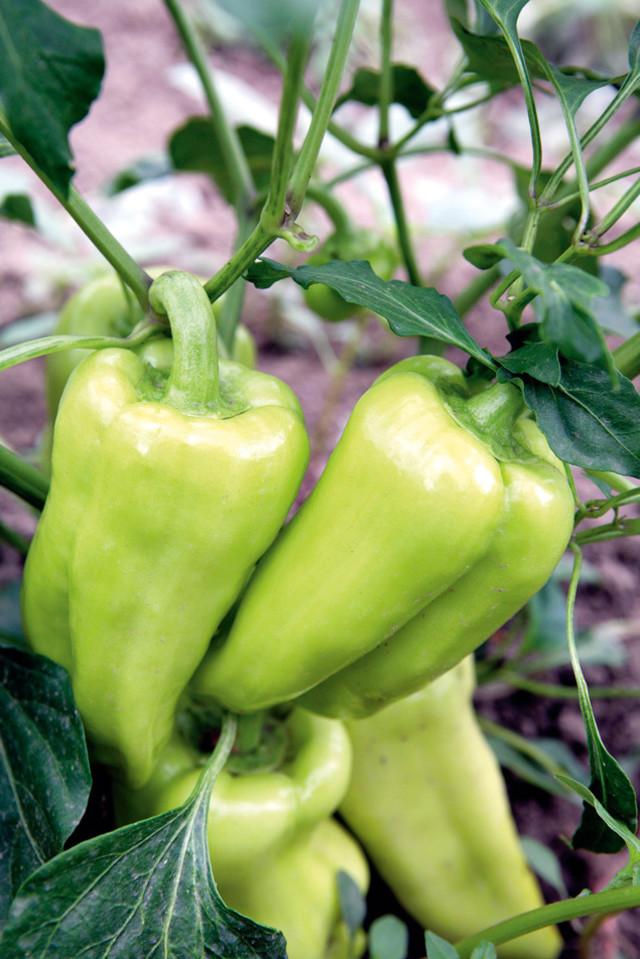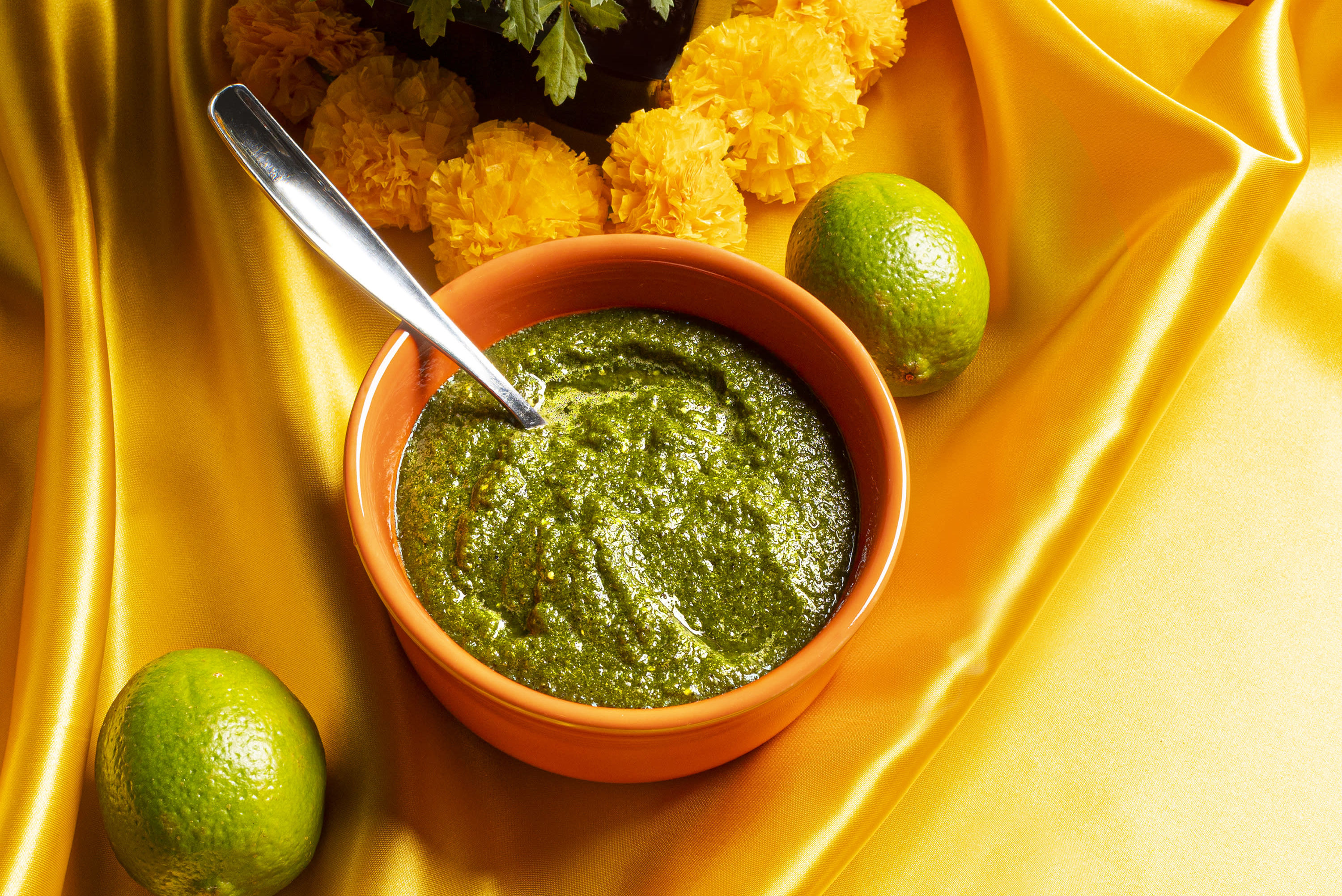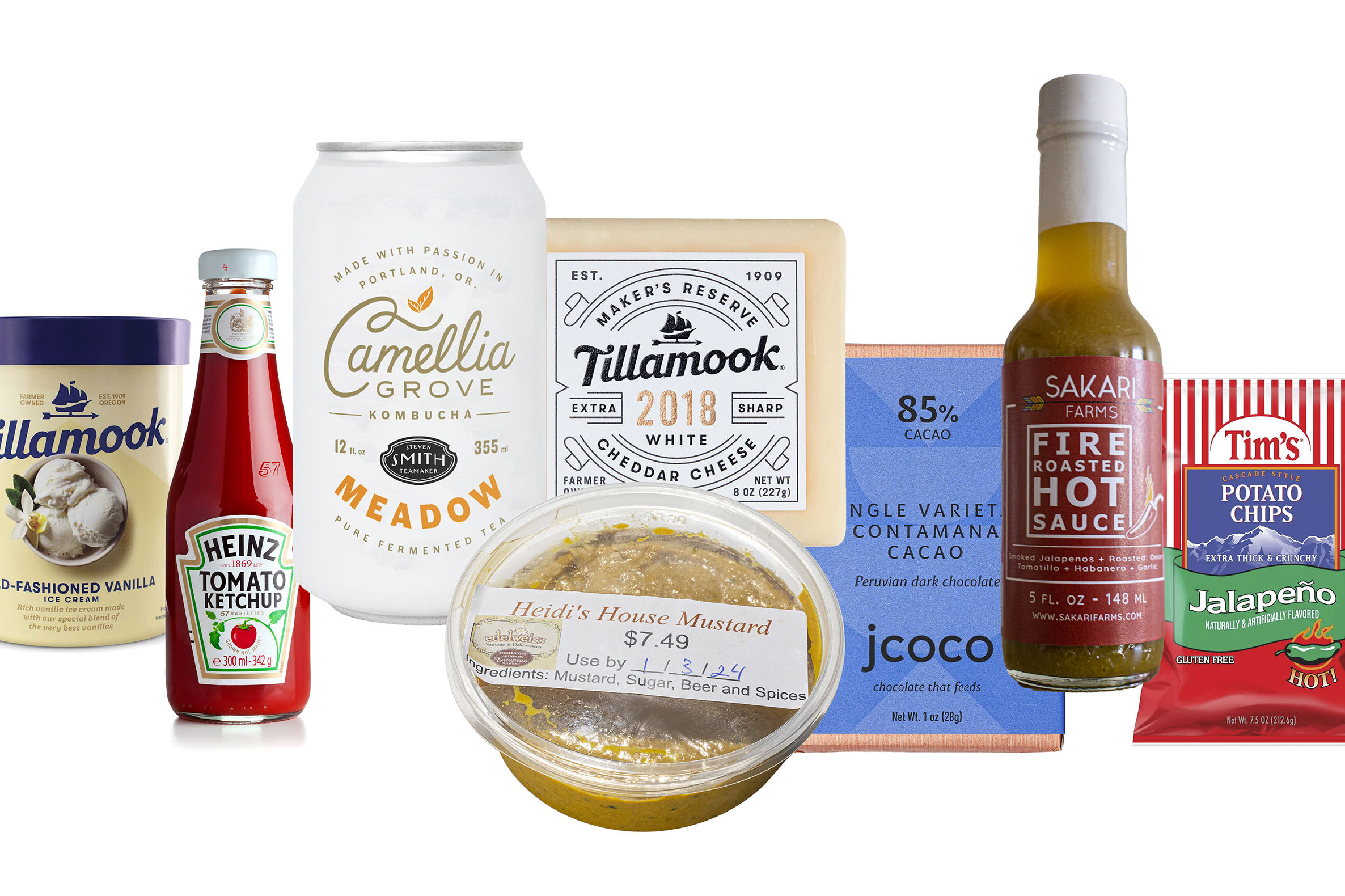Peperonata Makes the Most of Perfect Peppers

Image: Tom Oliver
DESPITE the proliferation of pepper varieties in this world, few can stand up to myriad uses. Bell peppers, for example, offer an abundance of color but not much flavor, and their skin can be leathery when cooked. Hot peppers pack a punch, but some people cower at their potency. By contrast, the boldly flavored, thin-skinned gypsy pepper is so remarkably versatile that Troy MacLarty, the chef at Lovely Hula Hands, has planted his own crop, ensuring that he’ll have as many of them as he needs. {% display:image for:article image:1 align:left width:300 %}
MacLarty first encountered gypsy peppers while working in the Bay Area and visiting the St Helena Farmers Market in Napa Valley—though at first he wasn’t sure what he was looking at. “They’re about four inches long and tapered, so they look like a serrano,” MacLarty says. “But they’re not hot; their taste is mild, more like a bell pepper, but much more interesting.” Indeed, the pepper’s texture is juicy as opposed to watery, and it possesses a bright, citrusy flavor.
As for their appearance, it changes quite dramatically from gypsy peppers’ first harvestable days in late July through their waning days in November. “They start out lime green—when they’re not as sweet,” says MacLarty, “and become sweeter as they turn red and then chocolate brown. You’ll often see different colored peppers on the same plant. My patch has all these colors.”
By patch, MacLarty means the gypsy peppers he planted, tended and is now harvesting at Sauvie Island Organics, the farm where he’s been working one day a week all year. In fact, Sauvie Island Organics has been growing the lustrous peppers for several years, as has Justy’s Produce & Flowers, a u-pick farm in Clackamas. Additionally, Viridian Farms sells them at the PSU farmers market through November, and New Seasons plans to carry them as well.
Once you’ve procured a bounty of shiny, tapered gypsy peppers—be they green, red or brown—their uses are nearly endless. Because they have a superthin skin, gypsy peppers are equally good eaten raw or cooked. “I like them sliced in a salad or thrown on a pizza. I also stuff them and then cook them off with cream,” says MacLarty.
Or you can use them to make peperonata, a nearly caramelized mélange of peppers, onions, tomatoes and capers, prepared on the stove with olive oil and vinegar. It’s delicious on its own as a condiment, but MacLarty also adds peperonata to a sauté of corn or shell beans and uses it to finish braises, such as lamb shoulder. “You can eat peperonata all year long; it’s just great,” he says. “And the gypsies make it even greater.”

Peperonata
Troy MacLarty, chef of Lovely Hula Hands, suggests using gypsy peppers of different colors if possible, though any mixture of sweet peppers will do. He also suggests throwing in a couple spicy peppers, such as jalapeños, if you like. Makes 3 cups.
INGREDIENTS
¼ cup extra virgin olive oil
6– 8 cups gypsy peppers or other sweet peppers, seeded and sliced into strips
2 cups sliced red onion
5 cloves garlic, peeled and thinly sliced
2– 3 tbsp red wine vinegar
2 ripe tomatoes, destemmed, cut in half and grated on a box grater, skin discarded
¼ cup capers, roughly chopped (salt-packed are best, soaked in cold water to remove excess salt)
½ cup basil, roughly chopped
Salt to taste
(1) Heat oil in a thick-bottomed pot over medium-high heat. Layer peppers, then onion, then garlic in the pot.
(2) Bring to a simmer, adding salt to taste, then cook, stirring often, until all ingredients are tender and most of the liquid has evaporated, about 20 minutes.
(3) Remove from heat. Stir in red wine vinegar, grated tomato, capers and basil, adjusting the amounts of vinegar and salt to taste. Keep in mind that the vinegar is meant to bring out the sweetness of the peppers, not overpower their flavor.
Mixture will taste best after sitting for an hour and can be stored in the refrigerator, covered, for up to one week.




